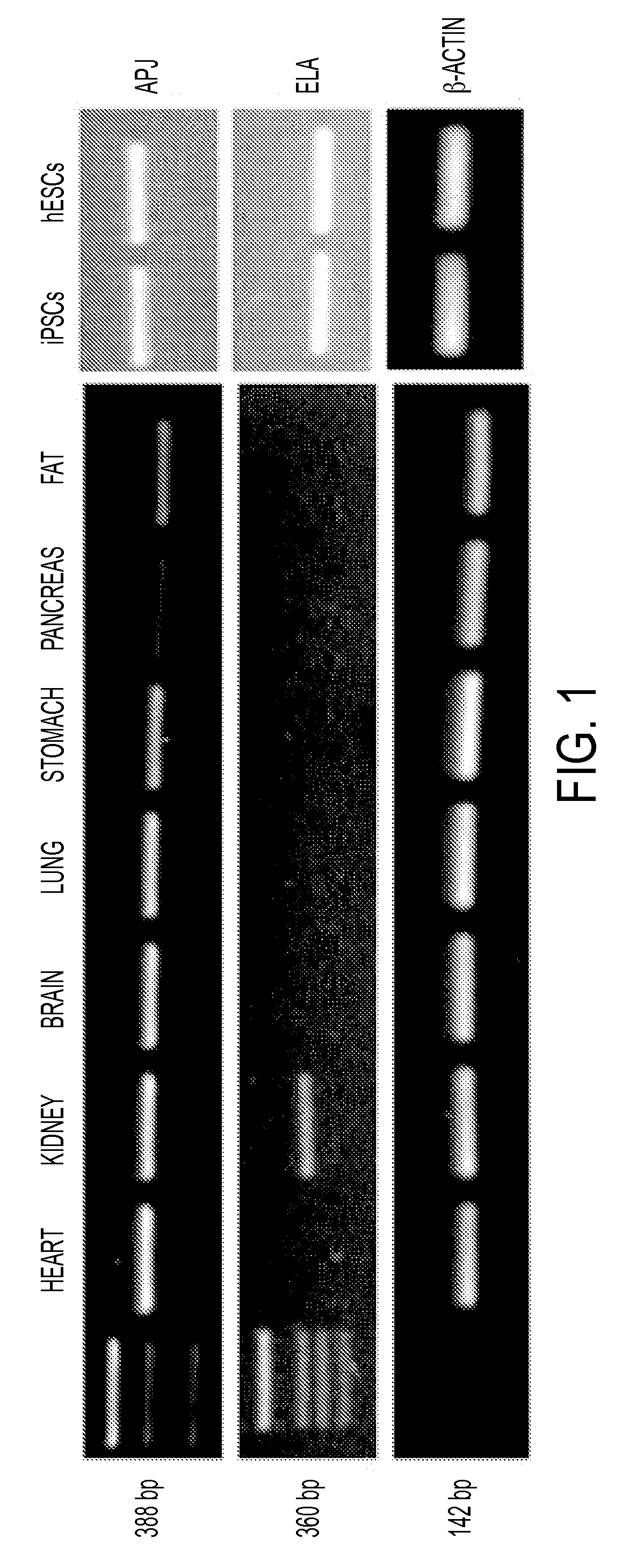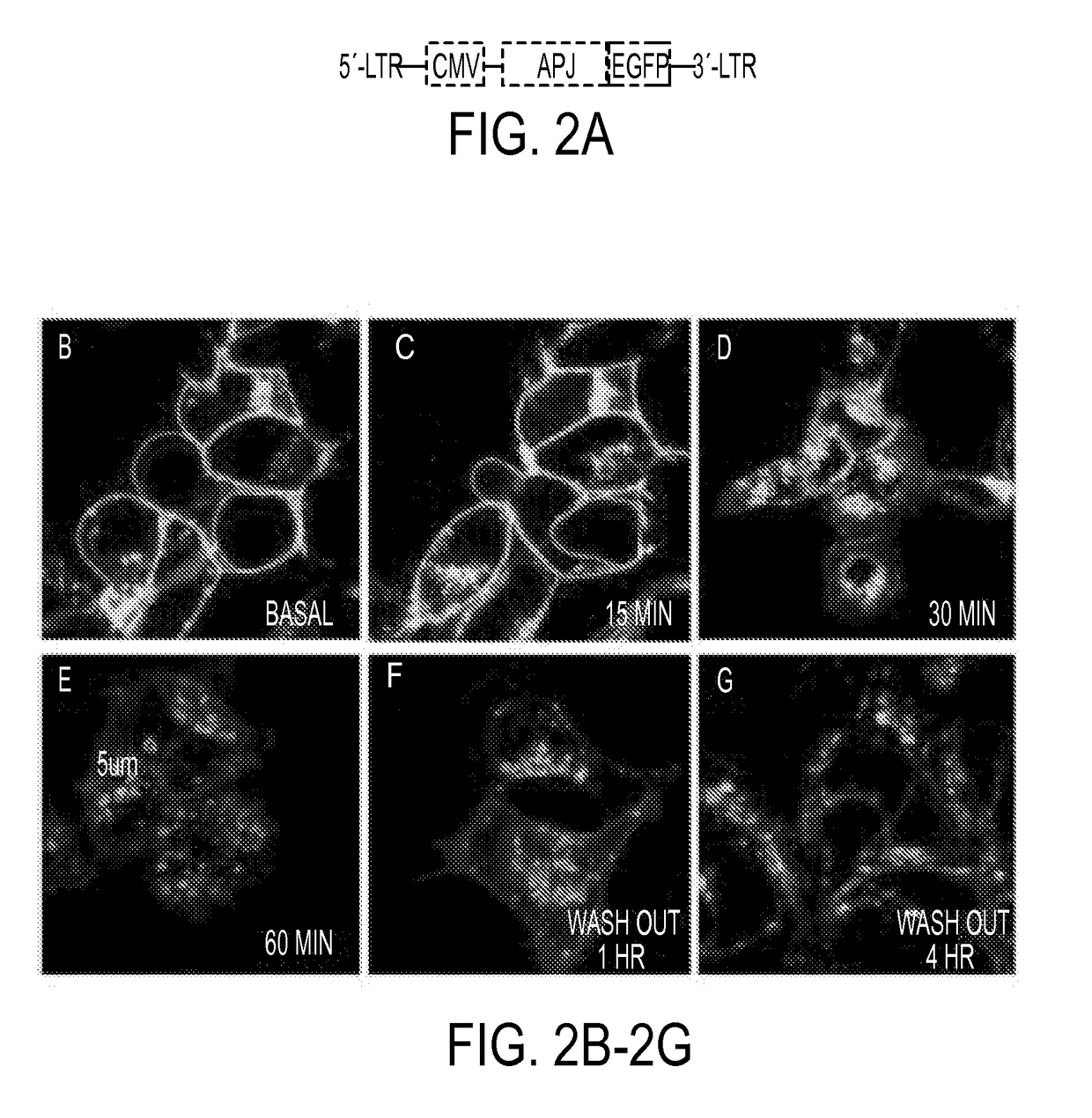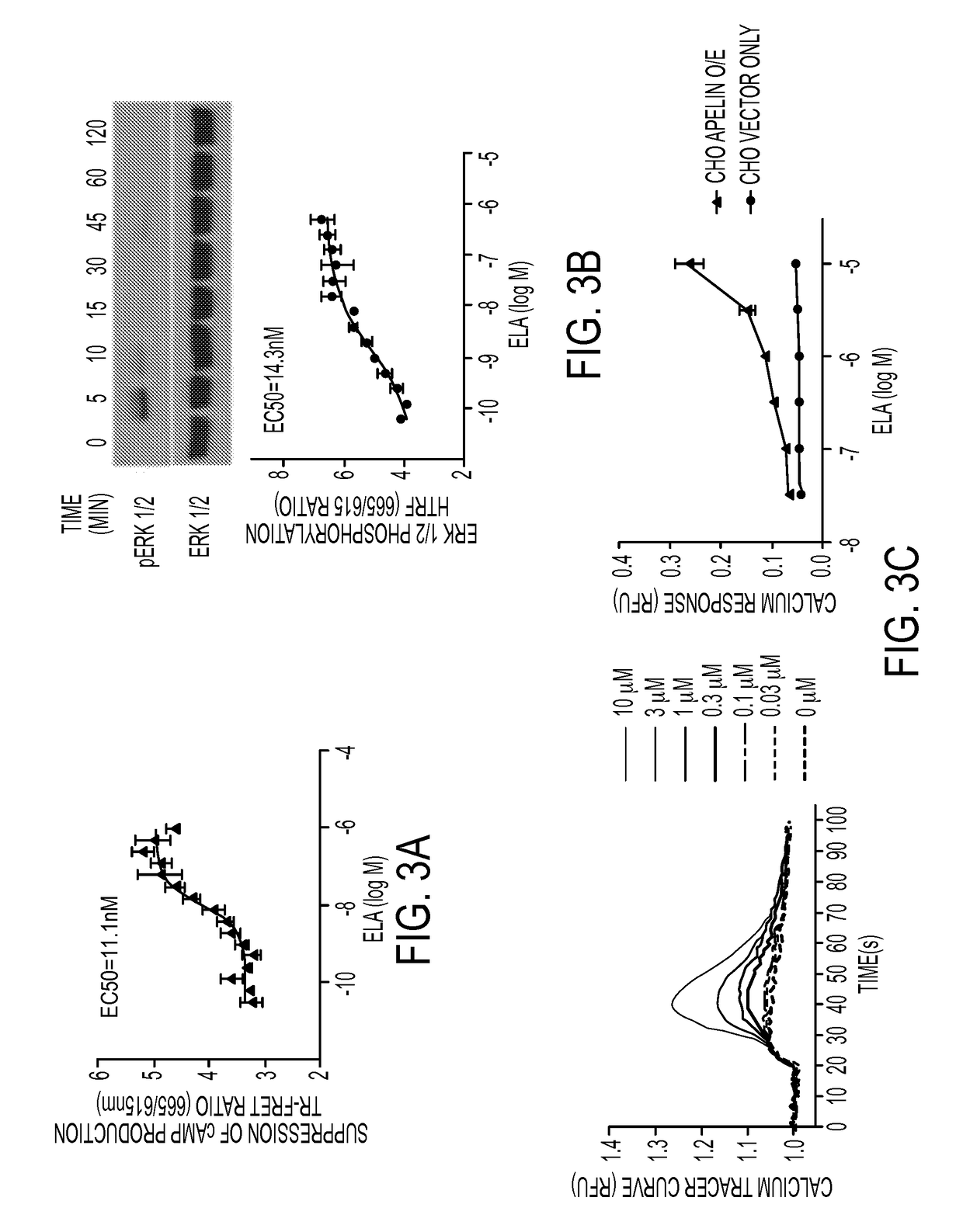Methods for treating cardiovascular dysfunction and improving fluid homeostasis with a peptide hormone
a peptide hormone and cardiovascular technology, applied in the direction of peptide/protein ingredients, peptide sources, instruments, etc., can solve the problems of patient inconvenience, short-acting peptide limitations, and many of the peptides and proteins have less than optimal pharmacokinetic properties
- Summary
- Abstract
- Description
- Claims
- Application Information
AI Technical Summary
Benefits of technology
Problems solved by technology
Method used
Image
Examples
example 1
Materials and Methods
Chemicals
[0218]The mature form of the 54 amino acid ELA peptide, a 32-amino acid, QRPVNLTMRRKLRKHNCLQRRCMPLHSRVPFP (SEQ ID NO: 1) and apelin-13, QRPRLSHKGPMPG (SEQ ID NO: 3), were purchased by GenScript (Piscataway, N.J.), at more than 98% purity. Other chemicals were from Sigma (St. Louis, Mo.) unless otherwise stated.
Cell culture
[0219]Chinese hamster ovary (CHO) cells were obtained from ATCC (Manassas, Va.) and grown in Ham's F12 medium supplemented with 10% fetal bovine serum (FBS), 100 μg / mL streptomycin and 100 U / mL penicillin. Human umbilical vein endothelial cells (HUVECs) were purchased from Lonza (Walkersville, Md.) and cultured in basal medium supplemented with 0.2% endothelial cell growth supplement (EnGS), 5 ng / mL recombinant human EGF, 50 μg / mL ascorbic acid, 10 mM L-Glutamine, 1 μg / mL hydrocortisone hemisuccinate, 0.75 U / mL heparin sulfate and 2% FBS. HUVECs between passage 3 and 5 were used for all experiments.
Plasmid construction
[0220]The human A...
example 2
Tissue Distribution of ELA and APJ in Humans
[0232]RT-PCR analyses of ELA and APJ on cDNAs derived from multiple human tissues including the heart, kidney, brain, lung, stomach, pancreas, and fat was conducted with primers specific for ELA or APJ and was conducted to determine ELA tissue distribution in humans, in comparison with APJ. As shown in FIG. 1, APJ is widely distributed and expressed in tissues of heart, brain, kidney, stomach, lung, adipose tissues and pancreas. In contrast, ELA was expressed only in adult kidney tissue and embryonic and induced adult pluripotent stem cells (ESCs and iPSCs).
example 3
ELA Induction of Human APJ Endocytosis
[0233]To investigate whether ELA would induce APJ internalization, APJ was over-expressed as a fusion protein with enhanced green fluorescent protein (APJ-GFP, FIG. 2B) through lentiviral infection in HEK293 cells. Its intracellular localization in response to ELA treatment was examined. At the basal level, the fusion protein was localized largely at the cell surface, with some perinuclear expression detected (FIG. 2C). Following ELA treatment, intracellular dot-like vesicles appeared by 15 min (FIG. 2C) and became more apparent by 30 min (FIG. 2D). By 60 min (FIG. 2E), large and hollow intracellular vesicles (3-5 p.m in diameter) were clearly visible in the cytoplasm. The fluorescent vesicles remained in the cytoplasm 1 hour (FIG. 2F) and appeared to return to the cell surface 4 hours (FIG. 2G) after the washout in cells previously treated with ELA for 60 minutes.
PUM
| Property | Measurement | Unit |
|---|---|---|
| Fraction | aaaaa | aaaaa |
| Fraction | aaaaa | aaaaa |
| Fraction | aaaaa | aaaaa |
Abstract
Description
Claims
Application Information
 Login to View More
Login to View More - R&D
- Intellectual Property
- Life Sciences
- Materials
- Tech Scout
- Unparalleled Data Quality
- Higher Quality Content
- 60% Fewer Hallucinations
Browse by: Latest US Patents, China's latest patents, Technical Efficacy Thesaurus, Application Domain, Technology Topic, Popular Technical Reports.
© 2025 PatSnap. All rights reserved.Legal|Privacy policy|Modern Slavery Act Transparency Statement|Sitemap|About US| Contact US: help@patsnap.com



